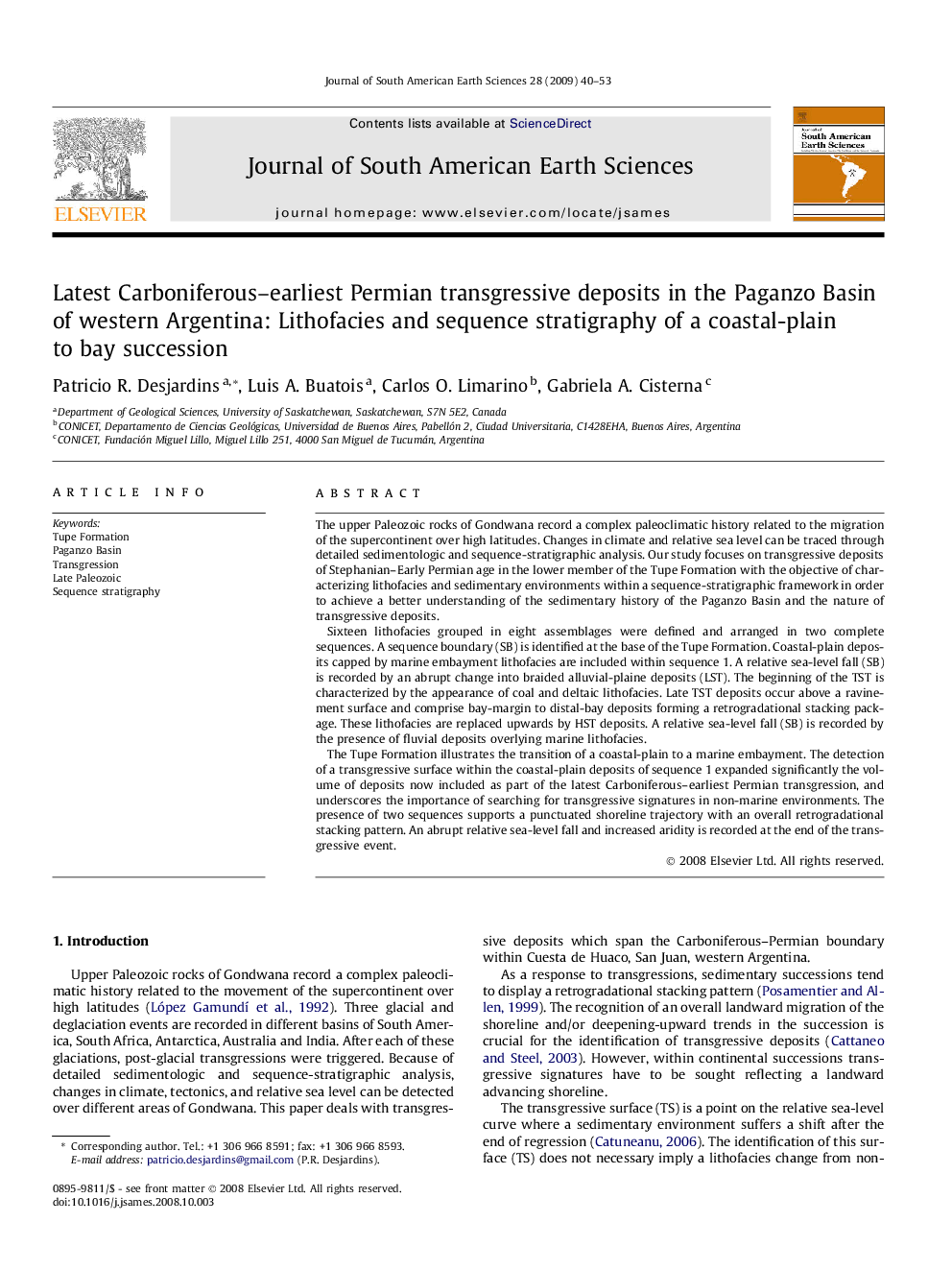| کد مقاله | کد نشریه | سال انتشار | مقاله انگلیسی | نسخه تمام متن |
|---|---|---|---|---|
| 4682860 | 1348949 | 2009 | 14 صفحه PDF | دانلود رایگان |

The upper Paleozoic rocks of Gondwana record a complex paleoclimatic history related to the migration of the supercontinent over high latitudes. Changes in climate and relative sea level can be traced through detailed sedimentologic and sequence-stratigraphic analysis. Our study focuses on transgressive deposits of Stephanian–Early Permian age in the lower member of the Tupe Formation with the objective of characterizing lithofacies and sedimentary environments within a sequence-stratigraphic framework in order to achieve a better understanding of the sedimentary history of the Paganzo Basin and the nature of transgressive deposits.Sixteen lithofacies grouped in eight assemblages were defined and arranged in two complete sequences. A sequence boundary (SB) is identified at the base of the Tupe Formation. Coastal-plain deposits capped by marine embayment lithofacies are included within sequence 1. A relative sea-level fall (SB) is recorded by an abrupt change into braided alluvial-plaine deposits (LST). The beginning of the TST is characterized by the appearance of coal and deltaic lithofacies. Late TST deposits occur above a ravinement surface and comprise bay-margin to distal-bay deposits forming a retrogradational stacking package. These lithofacies are replaced upwards by HST deposits. A relative sea-level fall (SB) is recorded by the presence of fluvial deposits overlying marine lithofacies.The Tupe Formation illustrates the transition of a coastal-plain to a marine embayment. The detection of a transgressive surface within the coastal-plain deposits of sequence 1 expanded significantly the volume of deposits now included as part of the latest Carboniferous–earliest Permian transgression, and underscores the importance of searching for transgressive signatures in non-marine environments. The presence of two sequences supports a punctuated shoreline trajectory with an overall retrogradational stacking pattern. An abrupt relative sea-level fall and increased aridity is recorded at the end of the transgressive event.
Journal: Journal of South American Earth Sciences - Volume 28, Issue 1, July 2009, Pages 40–53